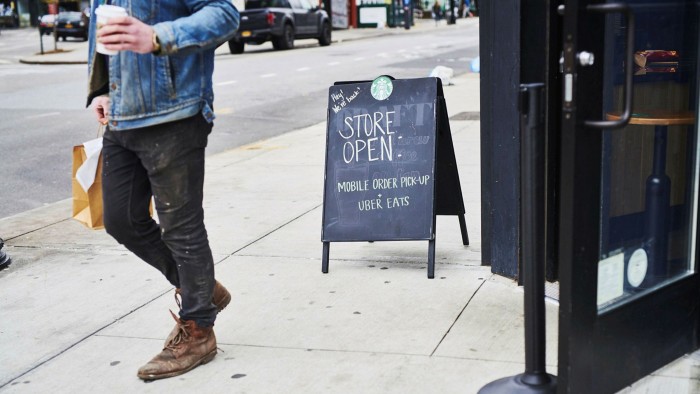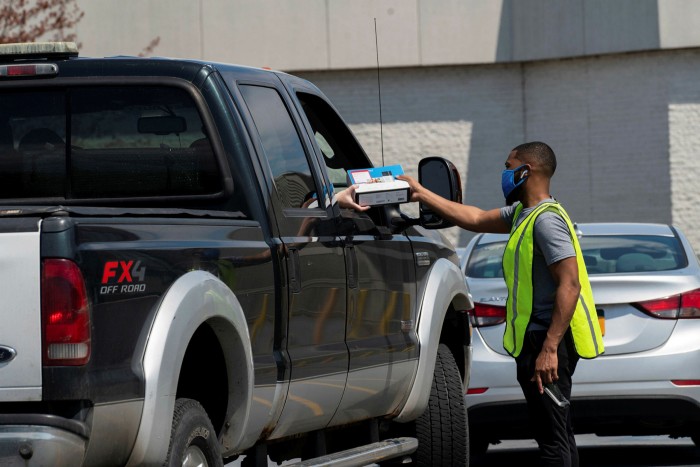What Covid teaches us about innovating fast

Roula Khalaf, Editor of the FT, selects her favourite stories in this weekly newsletter.
The Covid-19 pandemic has caused a groundswell of change in consumer habits, with a wholesale shift to digital. People who swore they would never have groceries delivered because they needed to “see and touch” products now blithely order online. Consumers who did not want to handle cash discovered mobile payment methods. Even professors who said they would never teach online are doing so.
Globally, some estimates suggest nearly half of consumers shop online more now than pre-pandemic. How have companies reacted? The crisis has offered a laboratory experiment in “innovate or perish”, with a fresh focus on the importance of “business model innovation”.
This approach means figuring out different ways to deliver goods and services to customers. Typically, it is not costly or high-risk. It differs from traditional innovation, in which novel ideas are generated using a full-blown research and development department with a substantial investment of time and resources.
FT Executive Education directories 2021

View a list of customised programme providers and open courses for managers in our directories.
Plus read more executive education coverage at www.ft.com/execed and find out what the listings show.
By contrast, a good example of a company based on business model innovation is Uber. It did not invent the systems it uses: the internet, smartphones, GPS, cars or the concept of transporting people. Instead, Uber delivers the same service — a taxi — to the same customers, but in a different way.
Many companies did not innovate in response to the pandemic and have not survived as a result. Restaurants and retailers have closed down because the owners wanted to wait it out for reopening. Other businesses, by contrast, rose to the occasion, notably by switching to, or ramping up, their digital offerings.
Consider Starbucks. It quickly instituted a mobile order pick-up system, allowing customers to drive up and collect coffee from a sales assistant outdoors, solving the problem of queuing in a crowded store. The company also swiftly incorporated the service into its app, which grew in popularity, turning more buyers into loyal customers.
Other retailers have introduced kerbside pick-up, such as Target and Best Buy. This cuts infection risk, tackles parking problems and helps people with limited mobility and families with small children. It seems likely that ordering in advance and visiting a store for collection will continue after the pandemic.

More broadly, business model innovation can help labour-intensive industries such as food service. In a 2019 paper in Management Science, I and my colleague Tom Fangyun Tan of Southern Methodist University’s Cox School of Business showed that when restaurants provided customers with digital ordering technology (iPads on the tables), customers spent more and vacated tables sooner. Overall, sales productivity increased by about 11 per cent. Companies could experiment with this approach with little cost or risk. A chain with 1,000 outlets could test its value in a few locations.
At a time when we are trying to make things as touch-free as possible, some restaurants have adopted QR code ordering. A restaurant displays the code and customers use their phones to scan it, browse the menu, order and pay.
Of course, implementing business model innovation has its challenges. While it is relatively easy to experiment with a new approach to delivery, at some point it must be rolled out and backed up by significant investment. One of the biggest stumbling blocks is corporate culture — it is difficult to foster innovation in large organisations.
On my Wharton executive education business model innovation course, we explore how to make companies less risk-averse and more tolerant of testing new ideas. Top management needs to regularly audit the existing business model, collect ideas and review them with their proposers. Nothing discourages innovation more than a lack of feedback.
It should be made clear that innovation is a responsibility of every manager, not just those in R&D. The initiative for culture change must come from the top, with the chief executive stressing openness to and celebration of experimentation and possible failure, supported by some funding that is easy to access. As Amazon’s Jeff Bezos once said: “If you double the number of experiments you do per year, you’re going to double your inventiveness.”
The pandemic has provided an object lesson in business model innovation. Businesses often change their approaches only when faced with disaster. But unless they are well prepared to begin with, they may find themselves too far behind to compete successfully when a crisis hits. They need a process to regularly re-evaluate their current approach, to protect against vulnerabilities and gaps, and to establish a corporate culture of experimentation.
While Covid-19 is considered by many to be a “once-in-a-generation event”, other unforeseen events that occur more frequently can disrupt any business. Think about the financial crisis, the dotcom bust and regional disasters that destabilise global supply chains, not least the cargo ship stuck in the Suez Canal in March. The ability to experiment — and the acceptance of new business models in a company — will be critical for responding well to future crises.
Serguei Netessine is vice-dean for global initiatives, Dhirubhai Ambani professor of innovation and entrepreneurship, and professor of operations, information and decisions at the Wharton School of the University of Pennsylvania
Comments